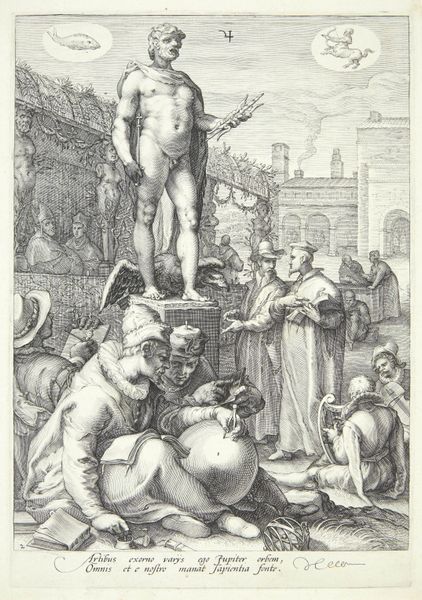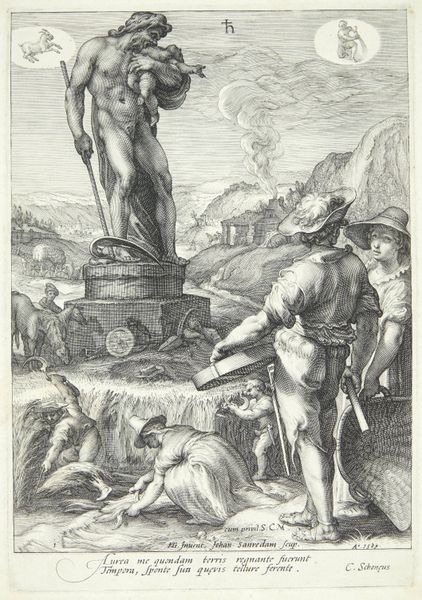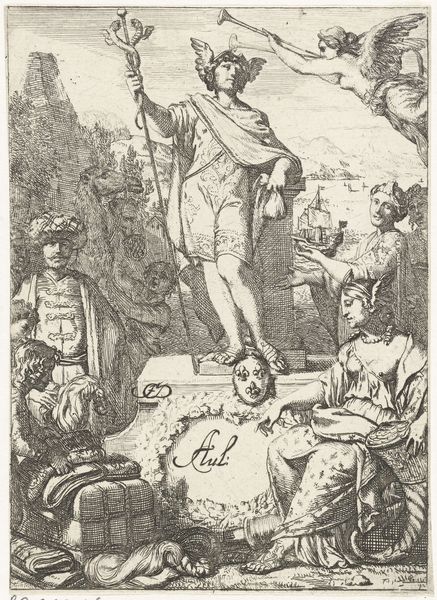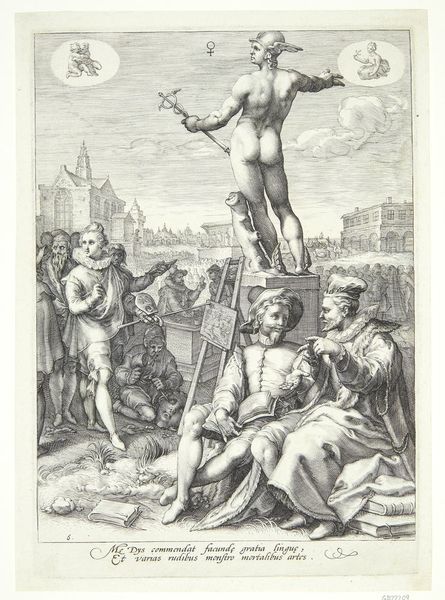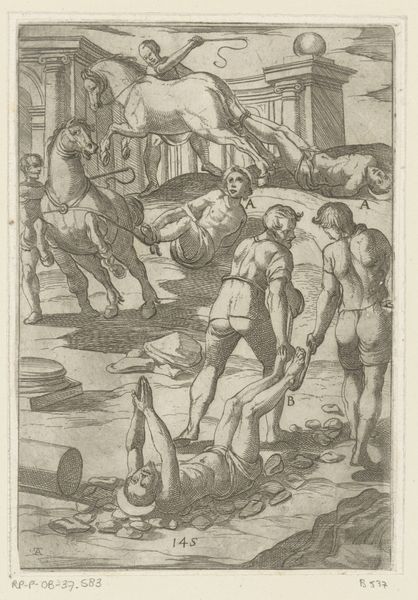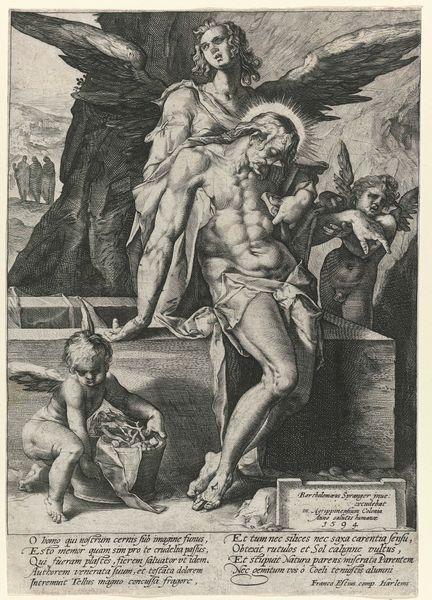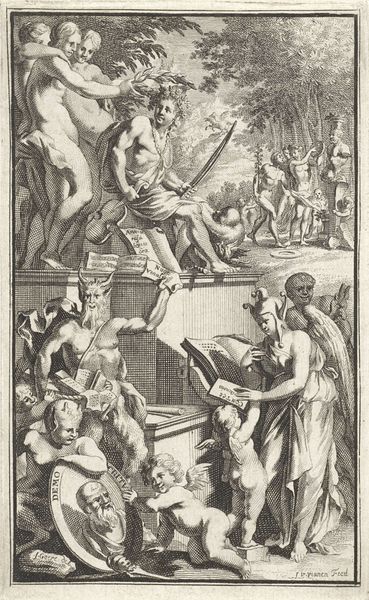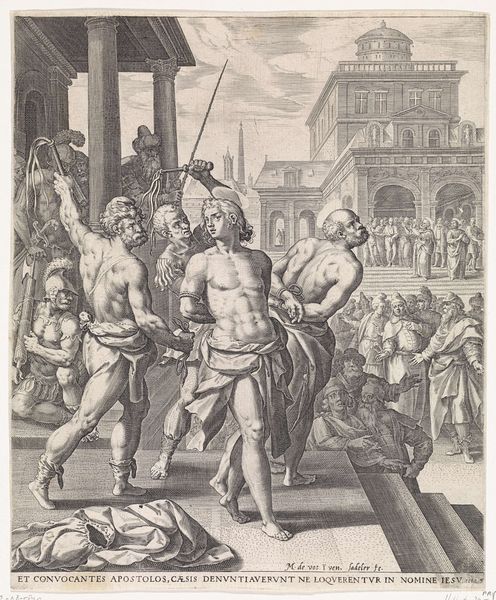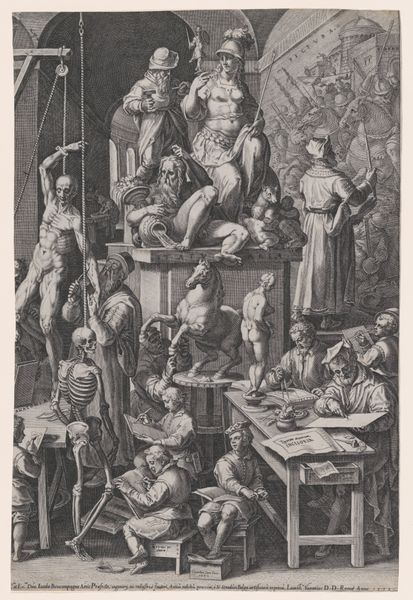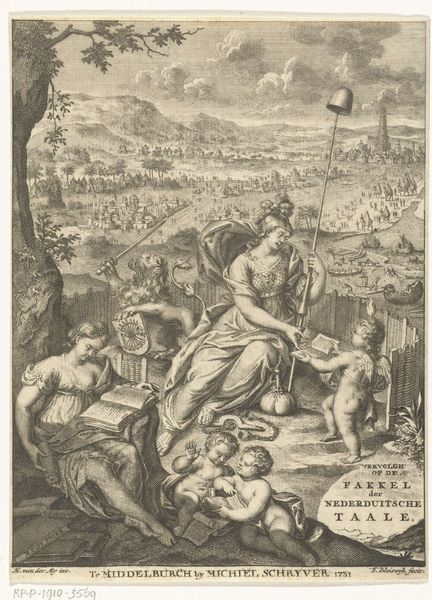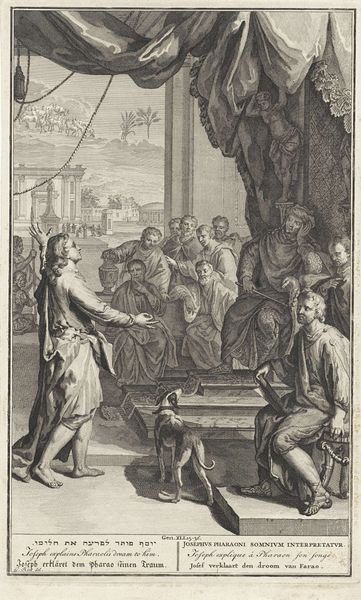
print, engraving
# print
#
landscape
#
mannerism
#
figuration
#
history-painting
#
engraving
Dimensions: 255 mm (height) x 178 mm (width) (plademaal)
Curator: Welcome. We're standing before "Diana," a 1596 engraving by Jan Saenredam, housed here at the SMK. Editor: My first thought? The landscape just vibrates with life, yet it also feels kind of melancholy, maybe even a bit uneasy. The sharp lines almost prickle. Curator: It's mannerist, alright. Notice how Saenredam presents Diana – not just as a classical figure but dominating a teeming, contemporary Dutch coastal scene. There's such a juxtaposition there. The divine versus the everyday grit. Editor: Right, all those ordinary folks laboring and going about their lives around this rather cold goddess on a plinth. Look at them: mending nets, wrangling poultry. And the etching itself - I'm intrigued by the mechanics of producing this image: the skill required to cut those intricate lines into the copper plate, the press, the ink. And then copies of this image would have circulated...amazing really. Curator: The detail is remarkable, especially for the time. It’s almost photo-realistic when you examine those boats out at sea. Though she's supposedly a huntress, and one associated with the moon, the crustacean hovering at the top-center looks far more like a lobster than a lunar object, ha. There is something subversive here, I think, about recasting myth in the guise of merchant reality. Editor: And is the engraver commenting on the commodification of mythological stories like this, turning something of ethereal nature into mere object to be possessed. And how much labour went into making those multiples? Those folks are *really* going to work! Curator: Yes, exactly. Perhaps the lobster points towards the Dutch obsession with their trade. Though even the inclusion of mundane figures is so… revealing, so modern. Editor: It humanizes the myth and then shows it is literally crafted from human labor to reach the hand of someone else, in exchange for currency. You know what I find the most compelling thing here? To think how those stark contrasts in black and white came to be: the layering and crafting. It has implications on wealth, on the dissemination of information, all the same. Curator: You know, I'd never really considered the socioeconomic implications as closely as you present them; rather my instinct was to enjoy the subtle wink in the juxtaposition, that delicious frisson between sacred space and labour. Editor: Well, maybe the lobster is a wink itself! But maybe it’s because the ocean sustains, it generates jobs and revenue! Curator: So much in art remains hidden in plain sight if you look at only the subject. I see your point entirely now. What you mention allows a more tangible perspective on it. Editor: Exactly! Next time, let's look for traces of process!
Comments
No comments
Be the first to comment and join the conversation on the ultimate creative platform.
